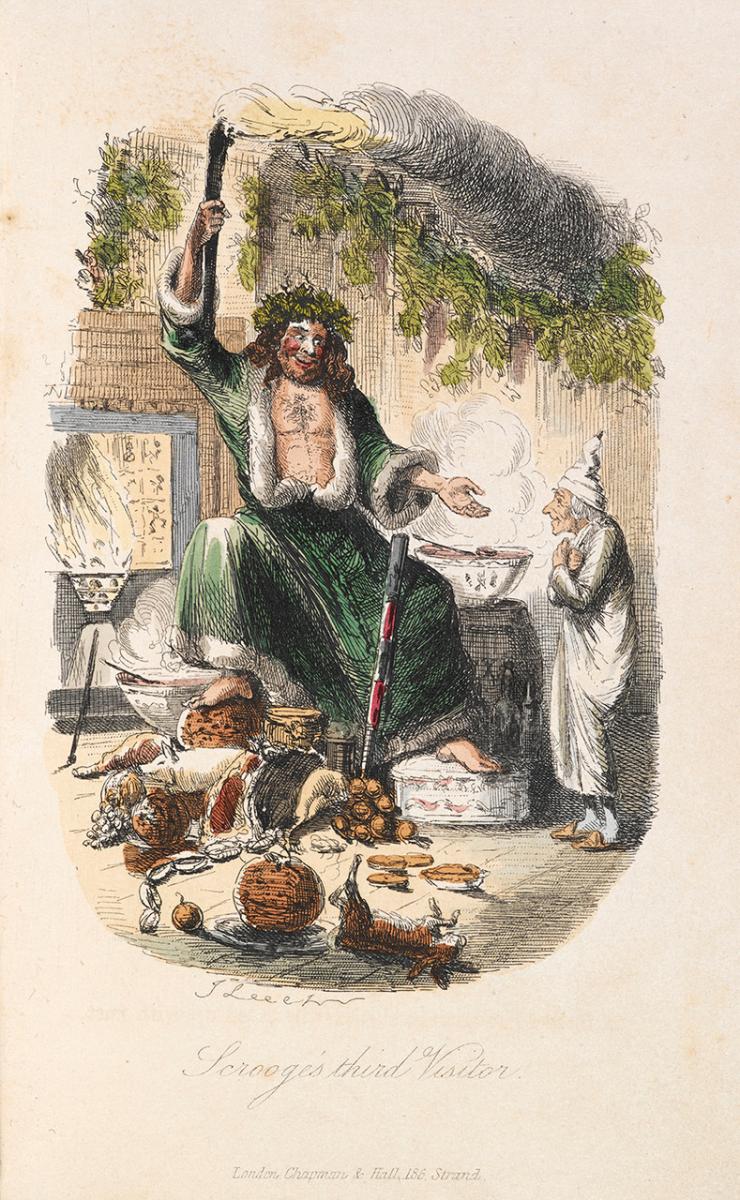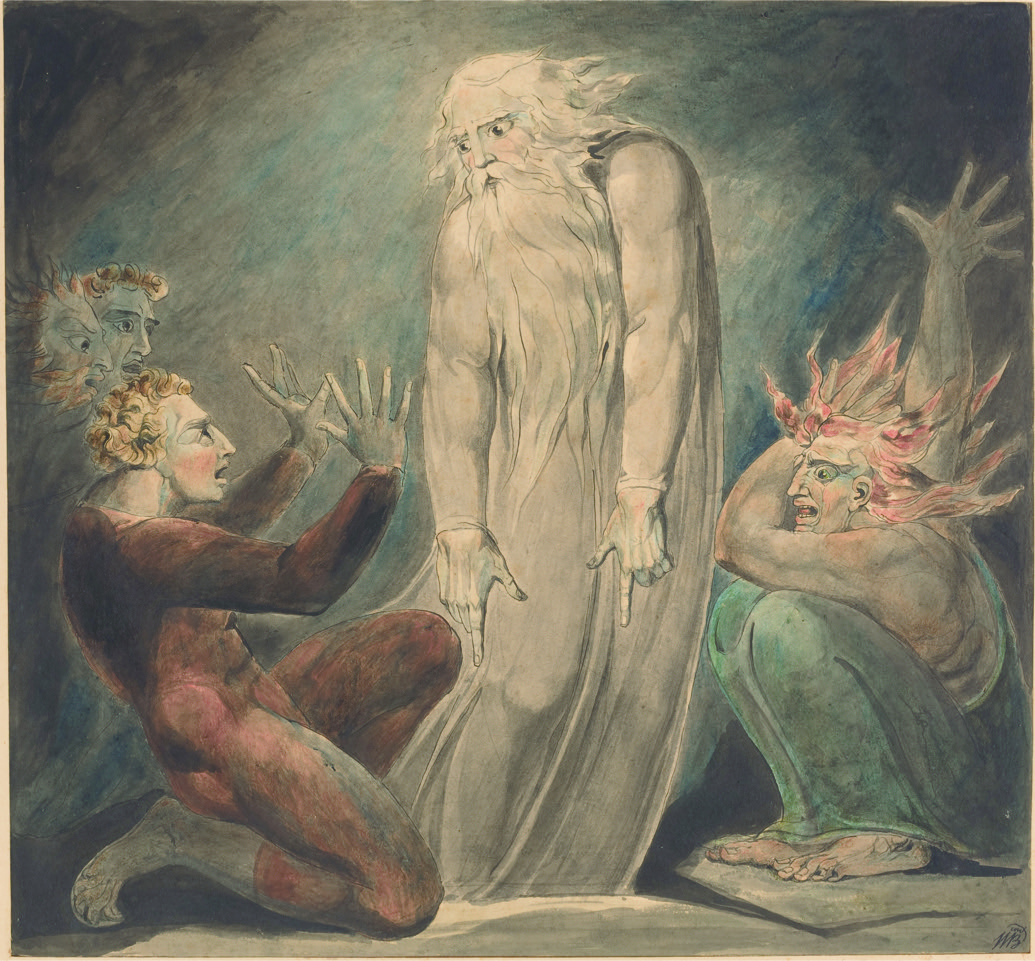This wonderful Cornish workshop and museum is dedicated to the legacy of studio pottery trailblazer Bernard Leach
Get into the spirit – three great examples of ghouls in art
Get into the spirit – three great examples of ghouls in art
20 Dec 2018
Can the dead return to haunt the living? No one knows. But the idea that they just might appears to be hardwired into the British frame of mind. Every village and great house can boast at least one spectral resident, sometimes a whole host of them, and I have seldom met anyone who didn’t have a ghost story up their sleeve. Ghosts are written into our culture. Shakespeare put one at the heart of Hamlet. Charles Dickens filled A Christmas Carol with them – but do they appear in visual art too? The answer is yes – if you know where to look.

Image: John Leech, The Second of the Three Spirits (the Ghost of Christmas Present), A Christmas Carol, 1843. British Library Board. All rights reserved/Bridgeman Images
The jolly phantom
Charles Dickens wrote A Christmas Carol quickly in the autumn of 1843, mentally composing this protest against exploitation and poverty as he walked London’s streets. His unforgettable anti-hero, Scrooge, has much in common with a traditional ghost: he is avoided and feared, exists in darkness (the price of candles!) and haunts a particular spot, rarely being seen outside his counting house. The ghosts who visit him on Christmas Eve are, by contrast, bizarre phantoms, like figures in a carnival. For the book’s first edition, illustrator John Leech drew the Ghost of Christmas Present as a one-man party – a far cry from the grim ghost of tradition. He is surrounded by the elements of the jolliest feast imaginable: game, poultry, great joints of meat, sausages, mince pies, plum puddings, oranges, ‘immense twelfth-cakes, and seething bowls of punch’. Beaming benevolently at Scrooge, this ghost is a moral teacher, showing him how life might be.
Image: James Gillray, Duke William’s Ghost, 1799. Courtesy of the Warden and the Scholars of New College, Oxford/Bridgeman Images
Plump presence
The caricaturist and printmaker James Gillray (1756–1815) loved using ghosts to satirise politicians and royalty. His spirits often appear at night to public figures, reminding them of their misdemeanours and pricking their consciences. Here, William Augustus, Duke of Cumberland, admonishes his great-nephew, the Prince of Wales (later George IV). Holding an hourglass aloft, the portly ghost administers a terrible warning about the perils of overindulgence, a vice to which the prince was all too prone. Or, rather, he tries to; George’s drunken stupor is so profound that he is oblivious to the ghost’s presence. Naked ghosts, whether in reality or in art, are extremely rare. Here Gillray turns the conventional idea of the thin or skeletal ghost on its head, making fun of the Duke’s obesity by representing him as a grotesque caricature of the fleshy putti that were stock figures in memento mori imagery, while allowing the brutal old soldier to retain his sword and tricorn hat.

Image: William Blake, The Ghost of Samuel Appearing to Saul, c.1800. National Gallery, Washington, DC
Shadow of their former souls?
Something strange happened to ghosts at the end of the 18th century: while they had formerly been substantial, they suddenly became see-through. It all began with phantasmagoria shows. Images of devils, apparitions and witches were projected onto gauzy screens, making these translucent terrors appear to hover in mid-air, to the horrified delight of audiences. The idea of the see-through ghost stuck. When the great Romantic artist William Blake painted the spirit of the Prophet Samuel conjured up by the Witch of Endor, he used translucent watercolour to make him glow with supernatural light.
Dr Susan Owens is an art historian, curator and Arts Society Lecturer. She is the author of The Ghost: A Cultural History (Tate Publishing), and is curator of Christina Rossetti: Vision & Verse at Watts Gallery Artists’ Village, on until 17 March 2019; wattsgallery.org.uk
Sign up for our monthly free newsletter, full of more stories and news on the latest exhibitions, at theartssociety.org/signup
About the Author
The Arts Society
JOIN OUR MAILING LIST
Become an instant expert!
Find out more about the arts by becoming a Supporter of The Arts Society.
For just £20 a year you will receive invitations to exclusive member events and courses, special offers and concessions, our regular newsletter and our beautiful arts magazine, full of news, views, events and artist profiles.
FIND YOUR NEAREST SOCIETY
MORE FEATURES
Ever wanted to write a crime novel? As Britain’s annual crime writing festival opens, we uncover some top leads
It’s just 10 days until the Summer Olympic Games open in Paris. To mark the moment, Simon Inglis reveals how art and design play a key part in this, the world’s most spectacular multi-sport competition


